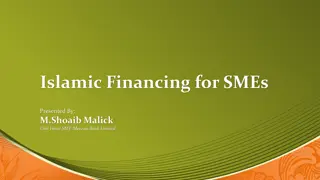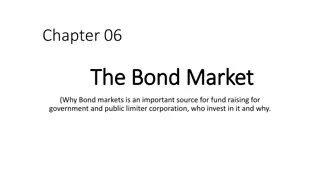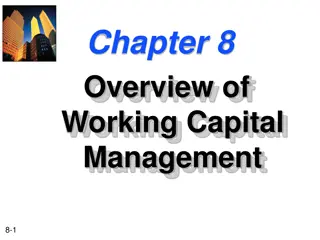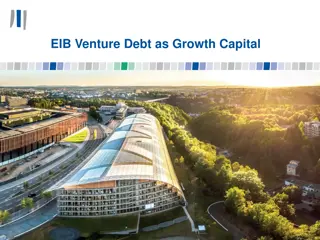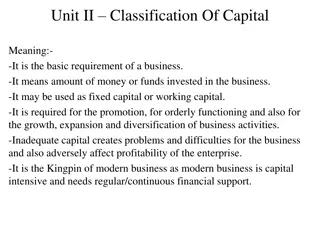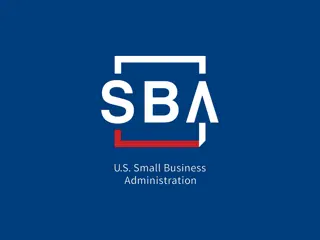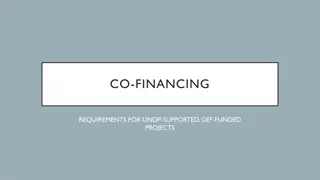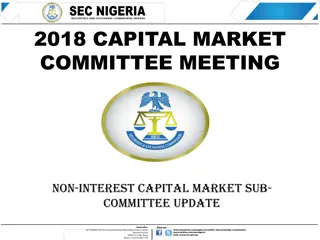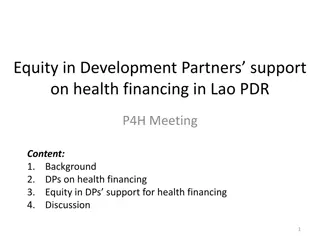Role of the Capital Market in Long-Term Development Financing
The presentation by John Robson Kamanga, CEO of Malawi Stock Exchange, delves into the role of capital markets in financing long-term development. Topics covered include defining capital markets, functions of stock exchanges, development finance, areas funded by development finance, the capital market as a source of funding, achievements of the Malawi Stock Exchange, opportunities, challenges, and solutions in capital markets.
Download Presentation

Please find below an Image/Link to download the presentation.
The content on the website is provided AS IS for your information and personal use only. It may not be sold, licensed, or shared on other websites without obtaining consent from the author.If you encounter any issues during the download, it is possible that the publisher has removed the file from their server.
You are allowed to download the files provided on this website for personal or commercial use, subject to the condition that they are used lawfully. All files are the property of their respective owners.
The content on the website is provided AS IS for your information and personal use only. It may not be sold, licensed, or shared on other websites without obtaining consent from the author.
E N D
Presentation Transcript
ROLE OF THE CAPITAL MARKET IN LONG TERM DEVELOPMENT FINANCING Presented by John Robson Kamanga Chief Executive Officer Malawi Stock Exchange. 22 November 2018
CONTENTS 1. Defining Capital Markets 2. Functions of the Stock Exchange as a player in the Capital Market 3. What is Development Finance? 4. Areas that development finance seeks to finance 5. The Capital Market as a source of development finance 6. Why the Capital Market? 7. Achievements of the Malawi Stock Exchange 8. What other capital markets have done 9. Opportunities for Capital Markets 10. Challenges of the Capital Market 11. Solutions
1. DEFINING CAPITAL MARKETS The Capital Market is a part of the financial system concerned with channeling wealth from savers/investors to institutions (public or private) that can put it to long term productive use. Primary market Where capital is raised Where new issue of capital market instruments is done Secondary market Where investor s trade in previously issued securities Where trading of securities is done
2. FUNCTIONS OF THE STOCK EXCHANGE AS A PLAYER IN THE CAPITAL MARKET Providing a link between financial raisers and financial suppliers (investors) Providing market place for buyers and sellers of investment assets Supervising trading activities Supervising the conduct of member firms Providing information services such as share price information Providing announcements made by listed companies
3. WHAT IS DEVELOPMENT FINANCE? Development finance involves public and private investment in physical development, redevelopment and/or business and industry aimed at supporting, encouraging and influencing expansion. Development finance aims to establish proactive approaches that leverage public and private resources to solve the needs of business, industry, developers and investors.
4. AREAS THAT DEVELOPMENT FINANCE SEEKS TO FINANCE Government projects e.g. roads, utilities, airports, schools etc Established industry e.g industrial parks, manufacturing, commercial retail centers etc Development & redevelopment - projects that require major public resource commitments to catalyze new private sector development Small businesses and micro-enterprises Entrepreneurs - not ready for traditional financing and need a unique approach to help them find the working capital needed to expand and grow.
5. THE CAPITAL MARKET AS A SOURCE OF DEVELOPMENT FINANCE EQUITY DEBT Government bonds Main Board Corporate bonds Alternative Capital Market The MSE has platforms to cater for various capital needs to provide inclusive access to capital for businesses.
6. WHY THE CAPITAL MARKET ? Large pool of resources Low cost financing Long term financing May offer funding for riskier activities that would traditionally not be served by the banking sector Offers locally denominated funding that is free from exchange rate risk Wealth distribution through investor participation Value creation 1. 2. 3. 4. 5. 6. 7.
6.1 LARGE POOL OF FUNDS A. Initial Public Offers Company Shares Offered 1,290,450,000 384,922,944 77,500,000 31,500,000 24,000,000 39,237,400 28,000,000 15,000,000 93,333,000 Amount (MK) Sub. Times 3.1 5.3 2.9 3.4 1.7 0.7 2.2 1.4 Date of listing 3 Nov 2008 12 Nov 2007 29 Sep 2008 21 Aug 2000 29 Jun 1998 8 Dec 2002 10 Nov 1997 11 Nov 1996 25 June 2007 TNM MPICO BRITAM NBM STANDARD SUNBIRD ILLOVO NICO NBS 2,580,900,000.00 855,076,624.00 178,250,000.00 126,000,000.00 78,000,000.00 72,589,190.00 63,000,000.00 29,410,000.00 242,665,800.00
LARGE POOL OF FUNDS CONTINUED B. Rights issues Company NBS MPICO PCL ILLOVO Offer Type Rights Issue Rights Issue Rights Issue Rights Issue Shares Offered 2,182,930,017 1,149,023,730 10,021,318 39,635,800 Amount (MK) 11,800,000,000.00 9,000,000,000.00 2,094,455,462.00 188,270,050.00
LARGE POOL OF FUNDS CONTINUED C. Bonds (Government & Private) Issuer Government Government Government Government Government Government Amount (MK) 3bn 5bn 20bn 106.9bn 0.8bn 1.6bn Coupon rate Maturity date 11% 10% 11% 15% 10% 9.5% 22 Feb 2021 25 Jan 2020 31 Aug 2019 30 Jun 2017 30 Dec 2016 30 Dec 2015 NFB MK14bn K4bn 17.37% 28 Jun 2021
6.2 EFFICIENT WAY OF RAISING CAPITAL Low cost of raising funds Company Listing Cost Ratio (%) 15.33 14.01 5.38 19.68 9.68 18.97 6.24 2.75 6.00 2.60 Bank lending Rates 38.00 25.00 35.00 35.00 55.00 50.00 27.00 34.00 34.00 24.78 NICO (1996) ILLOVO (1997) STANDARD (1998) PCL (1998) NBM (2000) SUNBIRD (2002) FMB (2006) MPICO (2016) NBS (2017) NFB Medium term notes (2018)
6.3 WEALTH DISTRIBUTION Company Shareholders Before Listing S/Holders STANDARD NBM NICO NITL ILLOVO PCL SUNBIRD FMBCH TNM NBS MPICO BHL 4 4 3 1,733 4,595 1,878 1,318 2,151 1,489 661 1,710 14,958 6,201 4,983 259 538 3 2 3 4 4 3 2
6.4 VALUE CREATION Market price depicts investors perception of a company. Company Year of Listing Listing Price NICO (adjusted for share split) 11-Nov-96 ILLOVO 10-Nov-97 BHL (adjusted for Share split) 25-Mar-97 STANDARD 29-Jun-98 PCL 9-Sep-98 NBM 21-Aug-00 SUNBIRD 21-Aug-02 NITL 21-Mar-05 NBS 25-Jun-07 MPICO 12-Nov-07 TNM 3-Nov-08 FMBCH 18-Sep-17 13-Nov-18 Growth (Times) 0.20 2.25 50.97 200.00 255 89 0.17 3.25 14.89 4.00 1.85 2.65 2.60 2.25 2.00 45.01 13.00 670.00 1,150.00 332.00 145.00 86.00 10.01 13.20 24.50 82.10 77 206 77 83 78 32 4 6 12 2
7. ACHIEVEMENTS OF THE MALAWI STOCK EXCHANGE Helped companies rebrand to achieve expansion beyond our borders FMBCH acquisition of Barclays Bank Zimbabwe Helped a bank meet its capital adequacy requirement NBS Bank MK11.8 bn rights issue. Helped a company restructure its balance sheet - MPICO MK9bn rights issue. Helped a bank increase capital for growth of its operations NFB 14bn Medium Term Note Program.
ACHIEVEMENTS CONTINUED Created a pool of investors to stock market investments - >40,000 shareholders. Key member on financial inclusion of Malawians through Financial Literacy program. Created a platform for Small and Medium Enterprises. Provided platform to Government for trading of its instruments
8. WHAT OTHER CAPITAL MARKETS HAVE DONE Kenya Electricity Generating Company (KenGen) listed through a government sale of 30% stake to the public in 2006. Over USD295 million was realized. In 2016, KenGen raised about US$260mn through a rights issue with the aim of injecting new equity into the Company, thereby creating additional debt headroom needed to access future loans to facilitate KenGen s expansion having successfully finalized the Geothermal baseload in 2014 with a JICA Loan Funding.
WHAT OTHER CAPITAL MARKETS HAVE DONE CONTINUED KenGen Geothermal baseload
WHAT OTHER CAPITAL MARKETS HAVE DONE CONTINUED NIGERIA Issuer Niger State Government Edo State Delta State Imo State Amount (N) Project description 6bn Rehabilitation & construction of roads 1bn 5bn 18.5bn Development of a housing estate Market, healthcare, water and education Rehabilitation of water schemes & road construction Education, commercial agriculture project, water distribution project etc Refinancing loans on ongoing infrastructural project Kwara State 17bn Lagos State 50bn
9. OPPORTUNITIES FOR CAPITAL MARKETS Growth in Pension Fund Assets Growing middle income class Frontier markets with untapped natural resources looking for financial resources. Increase in institutions of higher learning providing investor education Government demand for debt for implementation of infrastructure projects Growth in demand for funds in the real estate sector Growing interest in PPP High commercial bank lending rates 1. 2. 3. 4. 5. 6. 7. 8.
10. CHALLENGES OF THE CAPITAL MARKET Limited supply of products to satisfy potential demand on both primary and secondary markets. Low usage of capital markets for capital mobilization by potential issuers. Inadequate expertise for structuring of complex capital market products which leads to shortage of well prepared projects. High transactional costs. Multiple taxation in form of surtax, dividend tax, withholding tax which erode attractiveness of the capital market. Balancing and consistency of macroeconomic variables
11. SOLUTIONS Implement sound macroeconomic and policy frameworks. Government to take a leading role through MOF to have parastatals issue and list Bonds to fund development projects and also list commercial parastatals. Integration of the capital market to the financial system. Improve legal and regulatory framework. Development of securities instruments to align the risk-return appetite of institutional investors. Intensify financial literacy programs. Introduction of credit rating entities to facilitate the Bond market.





